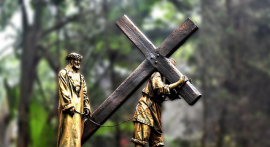
Divers have retrieved the AirAsia QZ8501 black box on Monday. After a day, the divers also recovered the plane's second black box, also known as the cockpit voice recorder.
"There's like 200-plus parameters they record. It's going to provide us an ocean of material," Aviation expert John Goglia said.
According to latest reports, the plane's main body, technically called the fuselage, has also been located northeast of where part of the tail was found.
Days after divers located part of the plane's tail, search teams and divers have finally recovered the plane's black boxes, which is the key to many unanswered questions about AirAsia flight QZ8501's abrupt and tragic plunge to the Java Sea on Dec. 28, 2014.
While the team was able to locate and retrieve part of the plane's tail over the weekend, the two black boxes were missing. The murky waters in the Java Sea made the search more challenging for the divers, one major reason why it took quite some time to locate the plane.
The teams' 17-day search operations efforts finally paid off after the two black boxes were retrieved. Calmer waters during early mornings proved to be more ideal in recovering the recording devices.
The cockpit voice recorder (CVR) stores all conversations between the command center and the pilot, which took place during the flight. It will also record background noise such as explosions or alarms.
The flight data recorder (FDR), on one hand, records the flight's history from the time it took off. It will contain data on the plane's position, as well as its ascent and descent rate, air speed, altitude, and direction.
AirAsia flight QZ8501 disappeared from radar shortly after it left Indonesia. The plane was carrying 162 passengers bound to Singapore, some of whom were looking to celebrate New Years' there.
AirAsia officials are under pressure to tell everyone the cause of the crash, which led to the demise of its passengers and crew. One of culprits, according to reports, was the weather last Dec. 28. Dozens of bodies were recovered as they floated on the sea, while many are believed to be still strapped in their seats.












